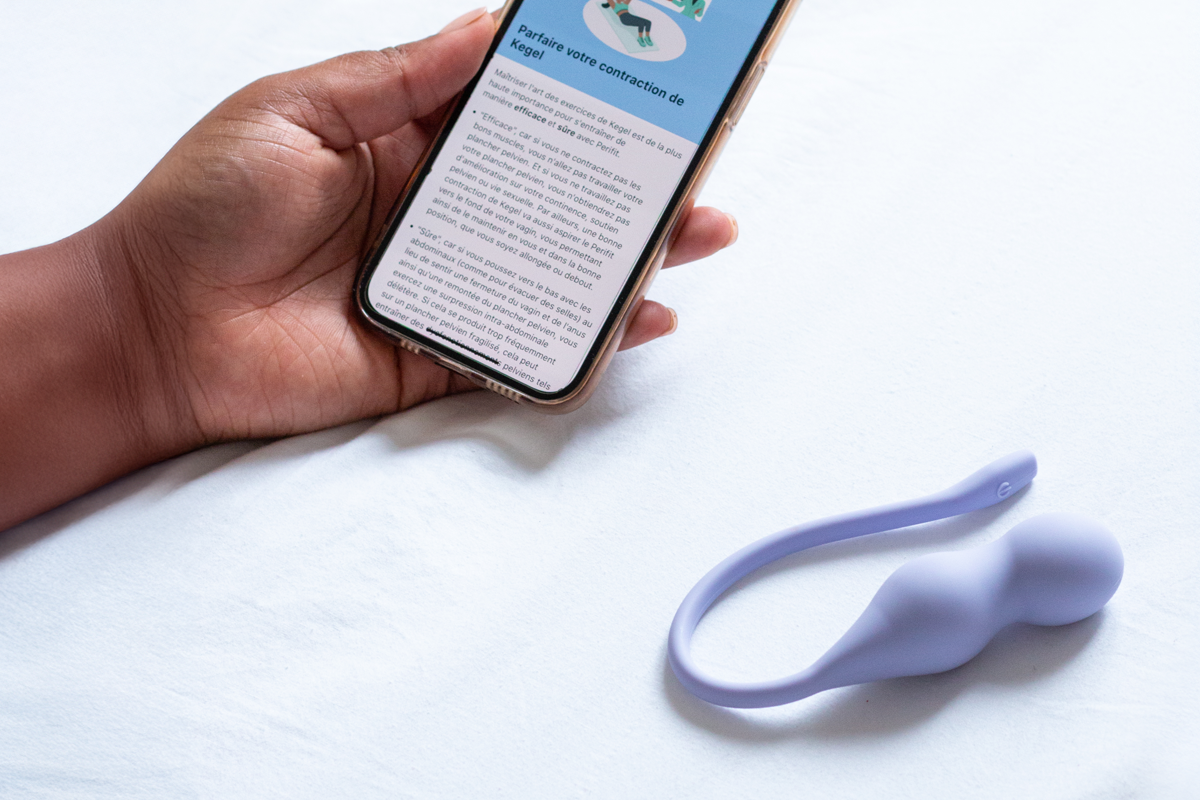Ever noticed those little leaks when you laugh or sneeze? Or maybe you're feeling things aren't quite right down there? Don't brush it off as just another quirk of your twenties. Pelvic floor issues can creep up on you, even in your prime years. It's not exactly dinner table talk, but it's high time we opened up about this often-overlooked aspect of health. Your pelvic floor plays a crucial role in your body's function, and taking care of it now can save you from bigger problems down the road. So, let's get real about what's going on with your pelvic floor and how you can keep it in top shape.
Causes of a weak pelvic floor in your 20s
Lifestyle factors
A weak pelvic floor in your 20s can stem from various lifestyle choices and habits. Being overweight or obese (1) places extra pressure on these muscles, potentially weakening them over time. High-impact exercises or heavy lifting without proper technique can also strain the pelvic floor.
💡 Additionally, chronic constipation and repeated straining during bowel movements (2) can lead to pelvic floor dysfunction, including rectal or vaginal wall prolapse.
Physical trauma and medical conditions
Traumatic injuries to the pelvic area, such as from accidents or falls, can significantly impact pelvic floor strength. Pregnancy and childbirth, even in your 20s, can stretch and weaken these muscles. (3) Certain medical conditions like connective tissue disorders or chronic coughing (from asthma or allergies) may also contribute to a weak pelvic floor.
Stress and anxiety
Mental health plays a crucial role in pelvic floor function. Stress and anxiety can cause tension in the pelvic muscles, leading to a condition called hypertonic pelvic floor. This constant state of contraction can paradoxically weaken the muscles over time and cause various symptoms.
Lack of awareness and prevention
Many individuals in their 20s are simply unaware of the importance of pelvic floor health. This lack of knowledge can result in neglecting crucial preventive measures like regular pelvic floor exercises. Consistently practicing Kegel exercises can significantly strengthen these muscles and prevent weakness, even at a young age.
💡 Remember, a weak pelvic floor in your 20s is not uncommon and can be addressed with proper care and attention. If you're experiencing symptoms or concerns, it's always best to consult with a healthcare professional for personalized advice and treatment options.
What are the symptoms of a weak pelvic floor in young adults?
A weak pelvic floor in your 20s can manifest through several uncomfortable symptoms. Recognizing these early signs is crucial for maintaining pelvic health and overall wellbeing. Let's explore some common indicators that may suggest pelvic floor weakness in young adults.
Unexpected urinary leaks
One of the most noticeable symptoms of a weak pelvic floor in 20s is experiencing urinary leaks. This can occur during everyday activities like laughing, coughing, or exercising. Perifit FDA-cleared devices are designed to reduce urine leaks effectively and diminish activity-induced leaks, highlighting how common this issue is among young adults with pelvic floor weakness.
Pelvic heaviness
A sensation of heaviness or pressure in the pelvic area is another telltale sign. This feeling may intensify towards the end of the day or after prolonged periods of standing. Some describe it as a dragging sensation or a feeling that something is "falling out" of the vagina. This symptom can significantly impact comfort and quality of life.
Discomfort during sex
Pelvic floor weakness can also lead to discomfort or pain during sexual intercourse. This may manifest as a lack of sensation, difficulty achieving orgasm, or even pain during penetration. In some cases, individuals may experience pelvic floor pain during sex, which can be a sign of muscle dysfunction.
Perifit's Kegel devices are designed to help improve pelvic floor technique, which can potentially enhance sexual function and pleasure.
It's important to note that these symptoms can vary in severity and may not always indicate a weak pelvic floor. However, if you're experiencing any of these signs, it's advisable to consult with a healthcare professional.
💡 Early intervention through targeted exercises and lifestyle changes can significantly improve pelvic floor strength and overall quality of life.
What are the long-term consequences of an untreated weak pelvic floor?
A weak pelvic floor in your 20s may seem like a minor inconvenience, but leaving it untreated can lead to serious long-term consequences. Let's explore some of the potential issues that may arise if you ignore those subtle signs of pelvic floor weakness.
Progressive pelvic organ prolapse
One of the most significant risks of an untreated weak pelvic floor is the development of pelvic organ prolapse. This condition occurs when the pelvic organs, such as the bladder, uterus, or rectum, descend and push against the vaginal wall. If left untreated (4), conditions like rectocele (rectal prolapse) can worsen over time, leading to more severe prolapse where organs may even protrude outside the body. This can result in discomfort, pain, and difficulties with bodily functions.
Worsening urinary and fecal incontinence
A weak pelvic floor in your 20s can progress to more severe incontinence issues if not addressed. Research shows (5) that untreated pelvic floor disorders tend to worsen over time, leading to more frequent and debilitating urinary and fecal incontinence. This can significantly impact your quality of life, potentially leading to social isolation and the need for ongoing management with devices or complex surgical procedures.
Chronic pelvic pain and sexual dysfunction
Ignoring pelvic floor weakness can also result in the development of chronic pelvic pain. Untreated myofascial pelvic pain can lead to central sensitization, making the condition more challenging to manage over time. Additionally, weakened pelvic floor muscles can contribute to sexual dysfunction, potentially affecting your relationships and overall well-being.
Increased risk of complications and recurrence
Delaying treatment for a weak pelvic floor can lead to more complex issues down the line. Complications from untreated pelvic floor disorders can include infection and organ damage. Moreover, if surgical interventions become necessary, the recurrence rates may be higher if the underlying pelvic floor weakness is not addressed. In fact, recurrence rates after surgery for pelvic organ prolapse can be as high as 70% without proper pelvic floor rehabilitation.
💡 By addressing a weak pelvic floor in your 20s, you can potentially avoid these long-term consequences and maintain better pelvic health throughout your life.
How to strengthen and prevent pelvic floor weakness in your 20s?
Pelvic floor exercises: Your first line of defense
Strengthening your pelvic floor muscles is crucial for preventing weakness and maintaining overall pelvic health. The most effective way to do this is through regular Kegel exercises. These exercises involve contracting and relaxing the muscles that support your pelvic organs. To locate your pelvic floor muscles, imagine you're trying to stop the flow of urine midstream. This is purely for identification purposes and should not be done regularly. Once you've identified the correct muscles, contract them for 5-10 seconds, then relax. Aim for 3 sets of 10 repetitions daily.
For those who find it challenging to identify the correct muscles, devices like Perifit Care can be incredibly helpful. This FDA-cleared Kegel exerciser provides real-time biofeedback for pelvic floor through an app, making your pelvic floor workouts more engaging and effective. To maximize results, use a Kegel trainer regularly. The benefits of Kegel exercises for women are numerous, from better bladder control to improved sexual function.
Lifestyle changes to support pelvic floor health
While exercises are essential, certain lifestyle modifications can significantly contribute to preventing weak pelvic floor in your 20s. Maintaining a healthy weight is crucial, as excess weight puts additional pressure on your pelvic floor muscles. Regular physical activity, particularly deep core and pelvic floor exercises, can also help support your pelvic floor.
Practicing good posture and avoiding straining during bowel movements are also important for pelvic floor health.
Pelvic floor strengthening foods include fiber rich vegetables, fruits and whole grains. These foods promote regular bowel movements, preventing constipation and the need to strain.
Seek professional guidance
Even if you're not experiencing symptoms, consulting with a pelvic floor physical therapist can be beneficial. They can assess your pelvic floor strength and provide personalized exercises and techniques to prevent weakness.
So there you have it – the lowdown on tackling pelvic floor issues in your 20s. While it might seem like a challenge meant for later in life, taking care of your pelvic health now sets you up for success down the road. By incorporating simple exercises and lifestyle tweaks, you're investing in your long-term wellbeing. Don't be shy about reaching out to a healthcare provider if you have concerns. Your body will thank you for the extra attention, and you'll be amazed at how small changes can make a big difference. A strong pelvic floor isn't just about avoiding leaks – it's about feeling confident and comfortable in your own skin.
Sources:
- https://www.pelvicfloorfirst.org.au/pages/how-can-i-tellif-i-have-a-pelvic-floor-problem.html
- https://my.clevelandclinic.org/health/diseases/14459-pelvic-floor-dysfunction
- https://www.continence.org.au/about-continence/continence-health/pelvic-floor
- https://my.clevelandclinic.org/health/diseases/17415-rectocele
- https://pmc.ncbi.nlm.nih.gov/articles/PMC6849106/





